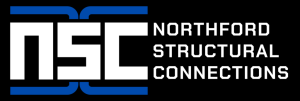The Role of Precast Connections in Modern Infrastructure
Introduction
In the evolving landscape of modern infrastructure, precast connections have emerged as a vital component in the design and construction of various structural systems. These connections not only enhance the structural integrity of buildings and bridges but also contribute to improved efficiency and sustainability. This article explores the significance of precast connections in contemporary infrastructure, focusing on their advantages, applications, and future trends.
Understanding Precast Connections
Precast connections refer to concrete elements manufactured in a controlled environment, rather than being poured on-site. This technique allows for precise control over the quality and dimensions of the components, which are then transported and assembled at the construction site.
Structural integrity is a primary concern in the construction industry. Precast connections contribute significantly to this aspect by ensuring that the structural elements fit together seamlessly. The use of high-strength materials in these connections can withstand various loads and environmental stresses, thereby enhancing the overall stability of the structure.
Benefits of Precast Connections
1. Enhanced Quality Control
Precast connections are produced in factories where environmental conditions can be maintained. This controlled setting allows for better quality control compared to traditional on-site pouring methods. As a result, defects can be minimized, leading to longer-lasting infrastructure.
2. Speed of Construction
One of the most significant advantages of using precast connections is the speed with which projects can be completed. Since many components are manufactured simultaneously while site preparation occurs, the overall timeline for project completion can be considerably shortened. This efficiency is particularly beneficial for large-scale projects that need to meet tight deadlines.
3. Design Flexibility
Precast connections offer architects and engineers the flexibility to design complex structures. The ability to customize precast elements allows for innovative designs that would be more challenging or even impossible to achieve with traditional construction methods.
4. Sustainability
Sustainability is increasingly becoming a priority in the construction industry. Precast connections support this initiative through their efficient use of materials and energy. By minimizing waste during the production process and optimizing resource usage, precast elements can lead to more sustainable infrastructure solutions.
5. Cost-Effectiveness
While the initial investment in precast materials may be higher than traditional methods, the long-term savings can be substantial. The reduction in construction time, combined with the durability and low maintenance of precast connections, often leads to lower overall project costs.
Applications in Modern Infrastructure
The use of precast connections spans a variety of sectors within modern infrastructure, including commercial buildings, bridges, and highway systems. Each application benefits from the unique properties of precast technology.
1. Commercial Buildings
In the construction of commercial buildings, precast connections enable faster assembly times and complex designs without compromising structural integrity. High-rise buildings, in particular, utilize precast concrete panels for facades and internal partition walls, benefiting from their lightweight and durable properties.
2. Bridges
Precast connections play a crucial role in bridge construction. They allow for rapid assembly and can be designed to bear significant loads while resisting environmental wear. The modular nature of precast components facilitates better traffic management during construction, minimizing road closures and disruptions.
3. Highway Systems
Highway systems increasingly utilize precast concrete in various applications, including barriers, retaining walls, and drainage systems. The rapid installation of these components can reduce construction times dramatically, leading to fewer interruptions for commuters and improved safety.
Quality Assurance and Structural Integrity
Ensuring the structural integrity of precast connections is paramount. Manufacturers adhere to strict standards to guarantee the quality of materials and construction methods. Rigorous testing throughout the production process ensures that each precast element meets established safety regulations.
1. Standards and Certifications
Precast manufacturers often pursue certification from professional organizations that establish quality benchmarks. This process involves routine inspections and compliance with national standards, reinforcing the reliability of precast connections in structural applications.
2. Inspection and Testing
Prior to installation, precast connections undergo a thorough inspection process. This includes visual assessments as well as structural testing to ensure that each component can withstand anticipated loads and stresses.
Future Trends in Precast Connections
The future of precast connections in modern infrastructure appears promising. Emerging technologies and methodologies are expected to propel advancements in this field.
1. Digital Fabrication
The integration of digital fabrication techniques enhances the precision and efficiency of manufacturing precast connections. Software-driven designs improve the customization of components, enabling more complex structures while maintaining high standards of quality.
2. Sustainable Materials
As sustainability continues to gain traction, the adoption of eco-friendly materials will likely become more widespread in precast manufacturing. Efforts to reduce carbon footprints and incorporate recycled materials are expected to deepen the resonance of precast connections within green building initiatives.
3. Advanced Testing Techniques
The introduction of advanced testing methods, such as non-destructive testing and real-time monitoring, will improve the assessment of precast connections during their lifecycle. This will assist in identifying potential structural issues before they escalate into significant failures.
Conclusion
The role of precast connections in modern infrastructure is indispensable. Their contribution to structural integrity, combined with their advantages in speed, quality, and sustainability, positions them as a cornerstone in contemporary construction practices. As technology advances and methodologies evolve, the future of precast connections seems poised for further innovation, reinforcing their necessity in building resilient and sustainable infrastructure.







